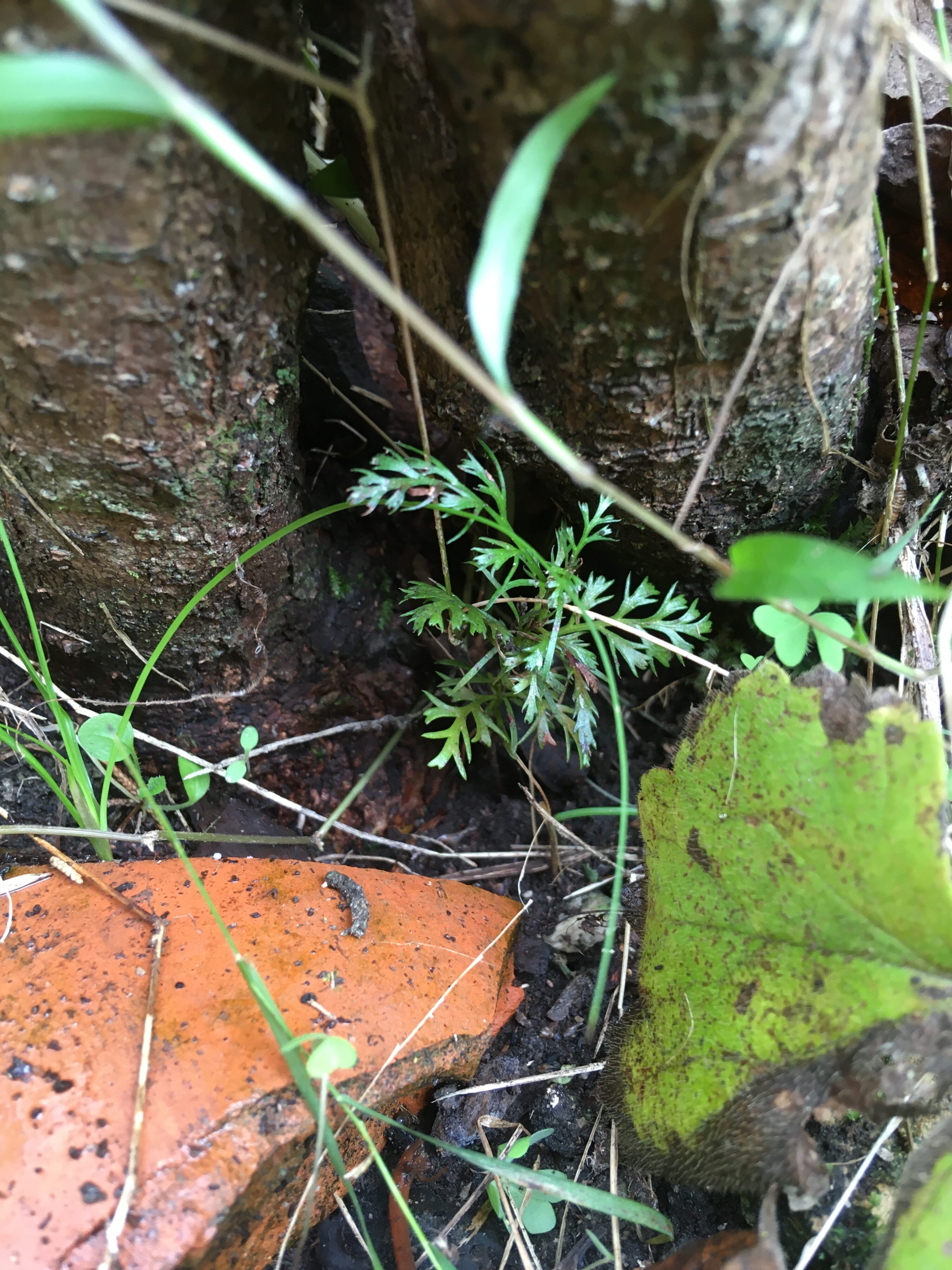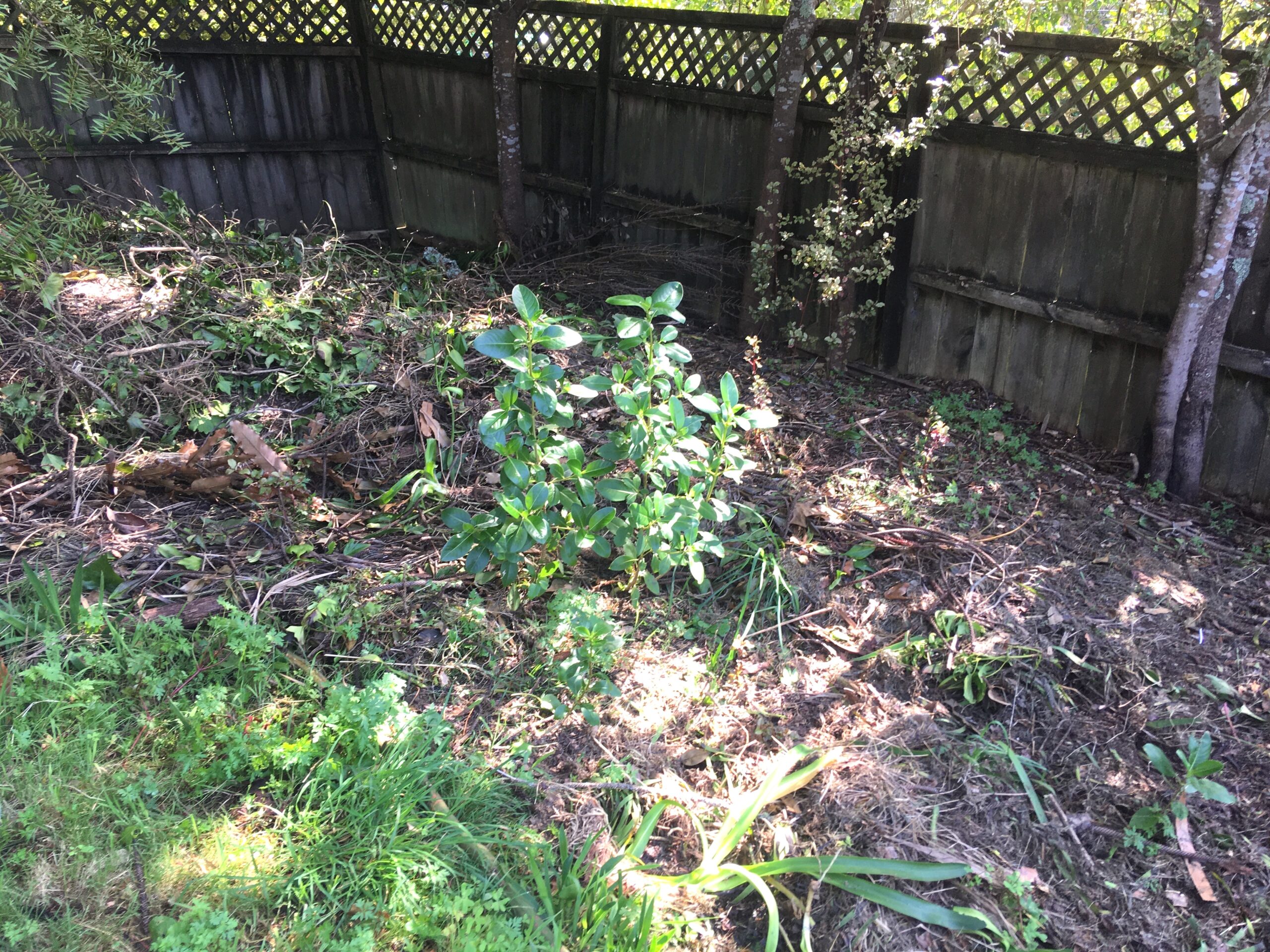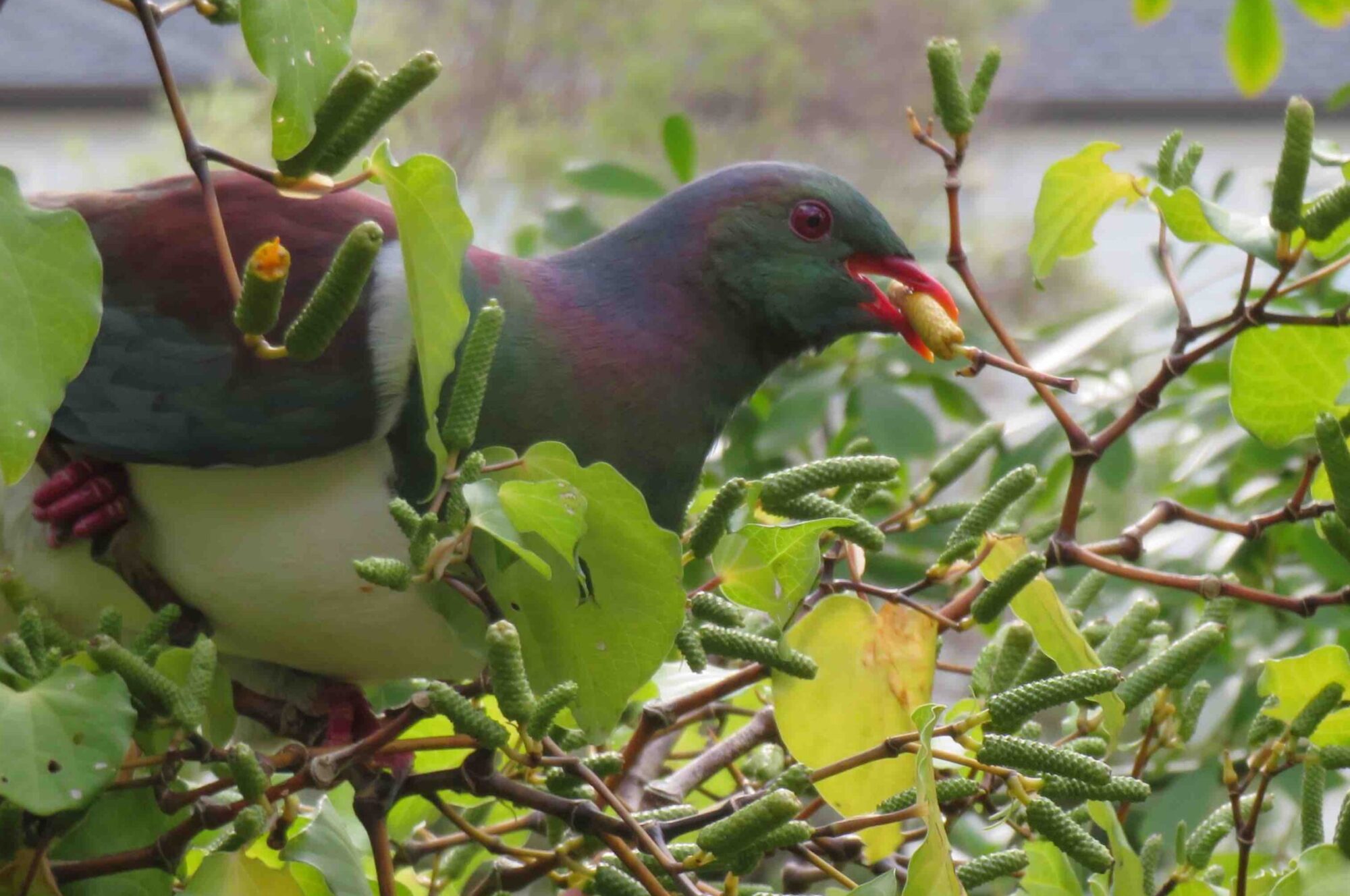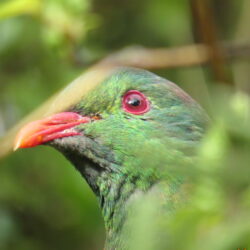In the 5 months we have been working with some of our gardening clients, they have learned to recognise and make use of the wild native trees, shrubs and grasses that spontaneously grow all over the North Shore, from the soil’s seedbank from former forest and wetland, or from seed and spores brought by birds or wind.
In this time, even small areas of mown lawn, or gardens containing only the common non-native ornamental species, have produced a few tanekaha, rewarewa and kahikatea seedlings, lots of baby Cabbage trees (Cordyline australis), five-finger (Pseudopanax), Karamu (Coprosma robusta) and mapou, (often referred to as Pittosporum, though it is actually Myrsine australis), and numerous native grasses, sedges and creeping ground covers.

Wild tanekaha seedling hidden among Clivia in a small garden of ornamental shrubs
Of course, those who are lucky enough to have a patch of native bush in or beside their garden, and some undisturbed areas of ground, have seen all kinds of forest species emerge and thrive, including native vines, ferns and orchids, and the less common “forest giants” like tanekaha, kahikatea, rewarewa and kauri.
wild karamu seedlings found among ivy and other weeds in a large weedy garden, a small area of which is now being restored to dense wild native vegetation


wild rewarewa seedling discovered while weeding under a Norfolk pine, now protected with some cut ivy and uprooted weeds
For new clients, or as a “stand-alone” service, we provide a 1.5 hour assessment of your garden’s potential for visual transformation and the recreation of diverse native pant communities, solely through plant identification, soil protection and chemical-free weed control.
Contact us or learn more about how we do it here.
.

